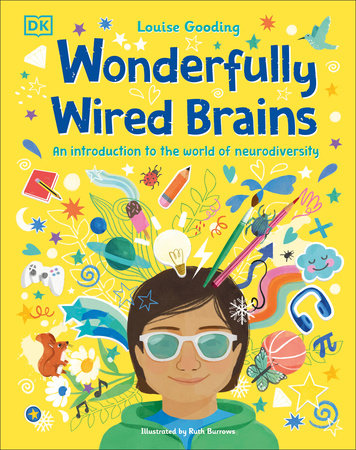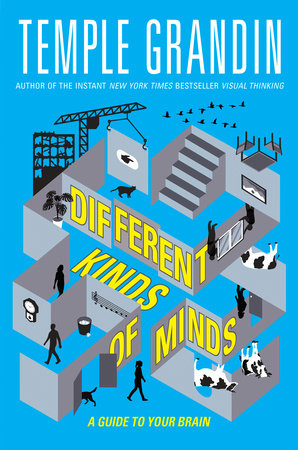The messages we convey through our storytelling are important and lasting, and those that are evident but not directly stated offer readers plenty to think about. One way to get those deeper-meaning messages across while offering middle graders real opportunities to engage with stories is through allegory.
What an allegory can do (and how it’s different from symbolism and metaphor)
It’s easy to confuse allegory with metaphor and symbolism—they are closely related literary devices with some overlap between them.
Metaphor – A comparison of two unlike things that points out how they, in fact, are alike: That girl is a night owl. The sun was a golden coin.
Symbol – Usually an object, character, event, or idea that has its own literal role in the story but also represents some important idea on a figurative level: The green light on Daisy’s dock, the raven perching on a statue of Athena.
Allegory – A little more didactic, allegories point the reader in a particular direction of thought or behavior with more comprehensive lessons about or inspired by life, morals, politics, religion, history, myth, or other big ideas. An allegorical character or situation might extend through the whole work, or a whole work can be an allegory with multiple meaningful elements.
You’ll recall allegories from studying adult lit. In the allegorical medieval morality play Everyman, for example, main character Everyman (that’s his name) doesn’t want to go on a journey of reckoning with Death (someone Everyman meets), and he is surprised that his buddies Fellowship, Kindred, and Goods won’t go along with him to the afterlife. He discovers, though, that Good Deeds will follow him on his journey, though he’s been remiss in attending to them and must turn to Knowledge and Confession to help Good Deeds along. (Medieval audiences got the allegorical message, loud and clear.) Other allegories you’ve probably studied convey political or societal messages, such as Animal Farm, Metamorphosis, and The Crucible.
It may be helpful, as a writer, to think about these devices’ comparative size and scope: In a story, metaphors are typically brief expressions for a passing effect on a reader (with extended metaphors really driving the point home with additional references). The scale of importance grows with a symbol, as it carries the weight of some important takeaway that enriches the reader’s comprehension of plot and character. An allegory uses symbols and metaphors and intends even more sweeping effect on the reader, with a message or meaning about life the reader can effectively employ for their betterment and/or the betterment of everyone.
Allegories seem heavy: Too much for MG?
 You might wonder so, but remember, fairy tales and fables have been serving up allegorical lessons for young audiences since once upon a time. And think about some classic children’s stories widely accepted as allegories: The Chronicles of Narnia, The Golden Compass, The Giving Tree, The Phantom Tollbooth, The Little Prince. There are modern examples of MG fiction with allegorical elements we can turn to for cues as well:
You might wonder so, but remember, fairy tales and fables have been serving up allegorical lessons for young audiences since once upon a time. And think about some classic children’s stories widely accepted as allegories: The Chronicles of Narnia, The Golden Compass, The Giving Tree, The Phantom Tollbooth, The Little Prince. There are modern examples of MG fiction with allegorical elements we can turn to for cues as well:
The Ogress and the Orphans by Kelly Barnhill — This allegorical fantasy reveals what happens to a community when its members are swayed by suspicion and start rejecting those unlike themselves.
When You Trap a Tiger by Tae Keller – In this Newbery Medal winner, tales told by the characters are allegories for family love and for the power stories have to inspire.
The Puppets of Spelhorst by Kate DiCamillo – This story’s allegorical plot and character actions represent big ideas about being called to one’s true purpose and following the heart.
 The Language of Spells – Garret Weyr – This adventure reveals the power of perception when considering what makes us special and points to what we tragically lose during times of conflict.
The Language of Spells – Garret Weyr – This adventure reveals the power of perception when considering what makes us special and points to what we tragically lose during times of conflict.
How might you employ the allegorical brush in your writing?
Experimenting with allegory in your writing? Some ideas to chart your course:
- What’s the big-picture message you want to send to readers?
- What are the most important elements of that message, and what’s the best way to convey them? Symbolic characters? Objects that recur? A quest, a battle, something else?
- Imply your message clearly but inconspicuously. Trust the reader: They will get the takeaway if the individual parallels are there.
- Keep the story strong and interesting…and prioritize it. The allegorical message flows from a story that is substantive and fulfilling all on its own.
I hope these ideas on allegory are helpful in your current projects, and thanks for reading!
















 My good friend, Professor Lisa Granata, who has 30 years’ experience teaching all ages, has used bugs as models in her art classes. She said the young students were enthused much more than the adults. She kindly shared her lesson directions, which she has used for both kids and adults.
1. Gather art supplies- pencil, eraser, pencil sharpener, heavy drawing paper or watercolor paper, extra fine sharpie, watercolors set (Jack Richeson 38010 Yarka Student Semi Moist Watercolor), a cup for water, paper towels, watercolor brushes (detail brush # 0 and a round tip brush size 12), masking tape and a magnifying insect box. (MagniPros Pack of 3 Magnifier Box Bug Viewer Magnifies up to 5X(500%) with Crystal Clear Image)
2. Go to the windowsill in your home and look for insects. Find the bugs with the most interesting shapes, patterns, or colors.
3. Carefully place insects into the box to study. Carefully observe the lines, shapes, colors, and patterns.
4. Tape all four sides of the edges of your paper to your table. This will keep your paper flat and leave a border.
5. Take your pencil and eraser and sketch one large insect on your paper or you might choose 3 different insects from your windowsill collection. Think about your composition. Draw large and fill the page.
6. Back up and check your proportions. Are the shapes correct? If not, make small adjustments. (This is part of the creative process).
7. Trace all pencil lines with your extra fine sharpie.
8. Fill your cup with water, take out a paper towel, open your watercolor set and wet your brushes.
9. Lightly dip your wet brush into the semi wet watercolors to add color to the insects. Carefully examine the insect’s details under the magnifying glass.
10. Have fun painting!
11. Peel off your tape the next day after the paper is dry.
Several models of loups are available at low cost just for that purpose. In my part of the country, we have an abundance of stink bugs and lady bugs that get inside during the winter and die before we spot them. If your windows are so airtight, you can probably find other sources. According to the American Museum of Natural History:
In terms of numbers of species, insects certainly represent the largest percentage of the world’s organisms. There are more than 1 million species of insects that have been documented and studied by scientists.
The ways the bug drawings can be used in classroom or educational settings are nearly as numerous as bugs themselves. An insect journal is definitely at the top of the list, but there is much more – posters, story illustrations, animation, reports, fine arts.
You can order loups here. Pack of 3 Magnifier Box Bug Viewer Magnifies up to 5X(500%)
My good friend, Professor Lisa Granata, who has 30 years’ experience teaching all ages, has used bugs as models in her art classes. She said the young students were enthused much more than the adults. She kindly shared her lesson directions, which she has used for both kids and adults.
1. Gather art supplies- pencil, eraser, pencil sharpener, heavy drawing paper or watercolor paper, extra fine sharpie, watercolors set (Jack Richeson 38010 Yarka Student Semi Moist Watercolor), a cup for water, paper towels, watercolor brushes (detail brush # 0 and a round tip brush size 12), masking tape and a magnifying insect box. (MagniPros Pack of 3 Magnifier Box Bug Viewer Magnifies up to 5X(500%) with Crystal Clear Image)
2. Go to the windowsill in your home and look for insects. Find the bugs with the most interesting shapes, patterns, or colors.
3. Carefully place insects into the box to study. Carefully observe the lines, shapes, colors, and patterns.
4. Tape all four sides of the edges of your paper to your table. This will keep your paper flat and leave a border.
5. Take your pencil and eraser and sketch one large insect on your paper or you might choose 3 different insects from your windowsill collection. Think about your composition. Draw large and fill the page.
6. Back up and check your proportions. Are the shapes correct? If not, make small adjustments. (This is part of the creative process).
7. Trace all pencil lines with your extra fine sharpie.
8. Fill your cup with water, take out a paper towel, open your watercolor set and wet your brushes.
9. Lightly dip your wet brush into the semi wet watercolors to add color to the insects. Carefully examine the insect’s details under the magnifying glass.
10. Have fun painting!
11. Peel off your tape the next day after the paper is dry.
Several models of loups are available at low cost just for that purpose. In my part of the country, we have an abundance of stink bugs and lady bugs that get inside during the winter and die before we spot them. If your windows are so airtight, you can probably find other sources. According to the American Museum of Natural History:
In terms of numbers of species, insects certainly represent the largest percentage of the world’s organisms. There are more than 1 million species of insects that have been documented and studied by scientists.
The ways the bug drawings can be used in classroom or educational settings are nearly as numerous as bugs themselves. An insect journal is definitely at the top of the list, but there is much more – posters, story illustrations, animation, reports, fine arts.
You can order loups here. Pack of 3 Magnifier Box Bug Viewer Magnifies up to 5X(500%) 


